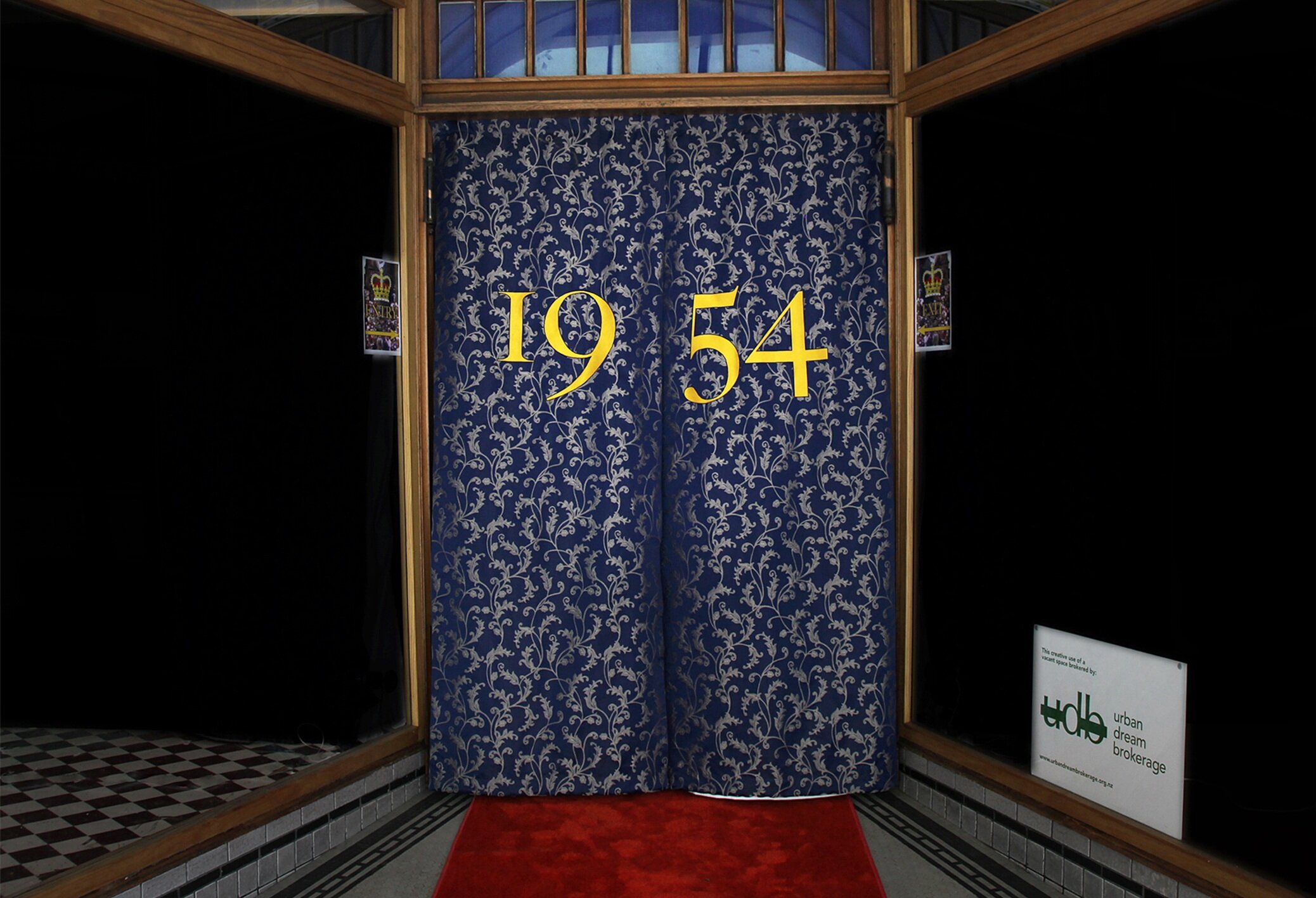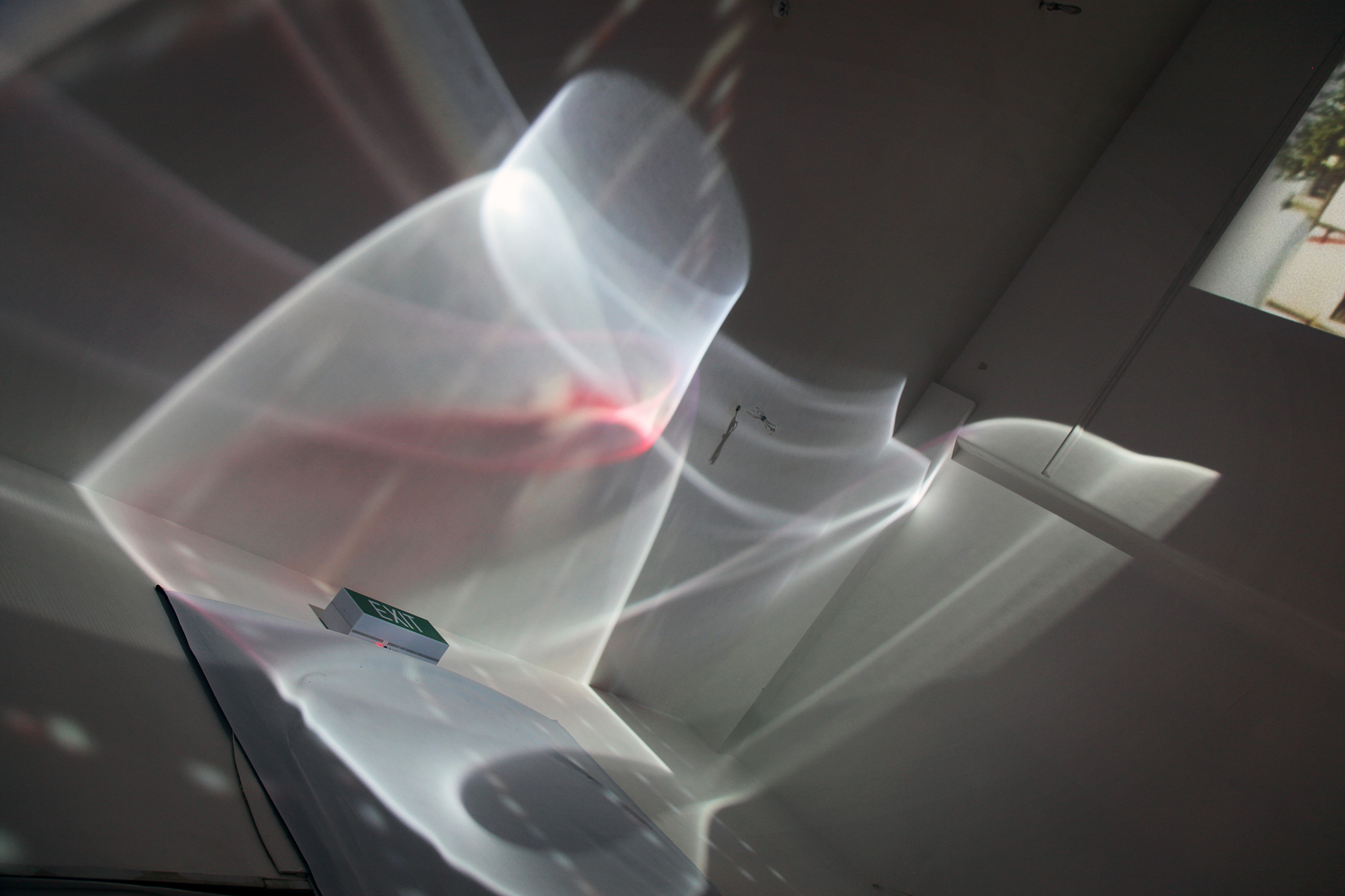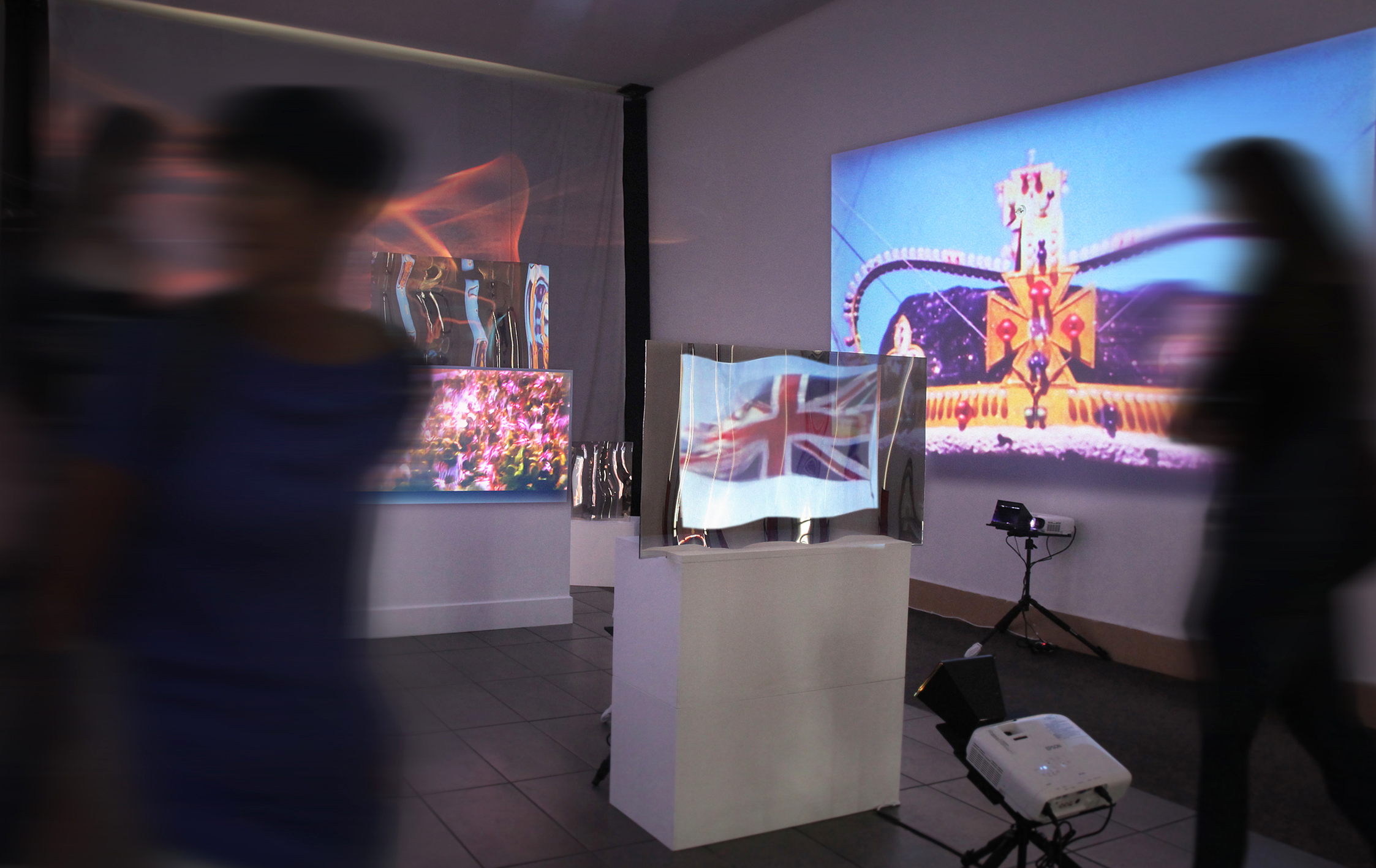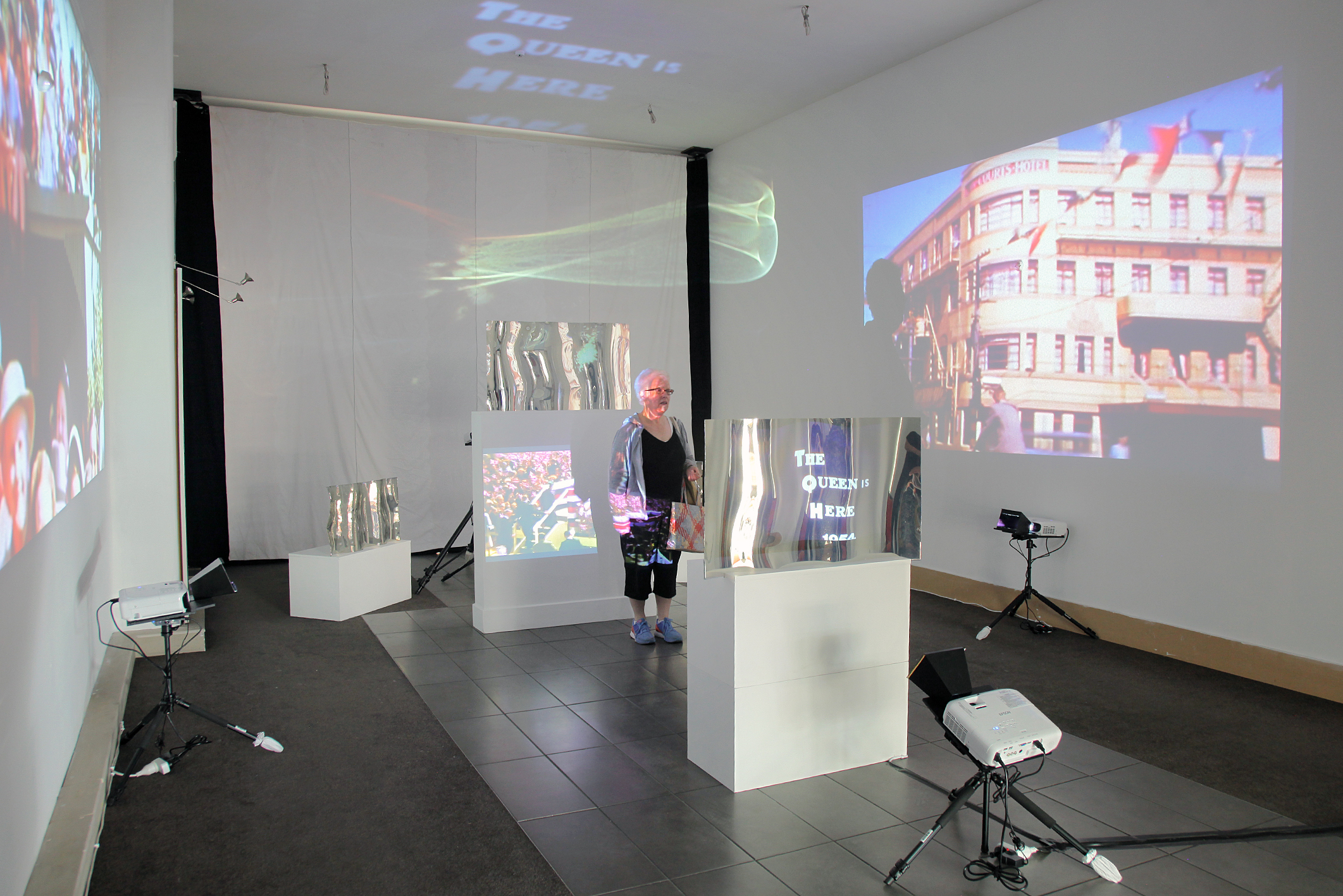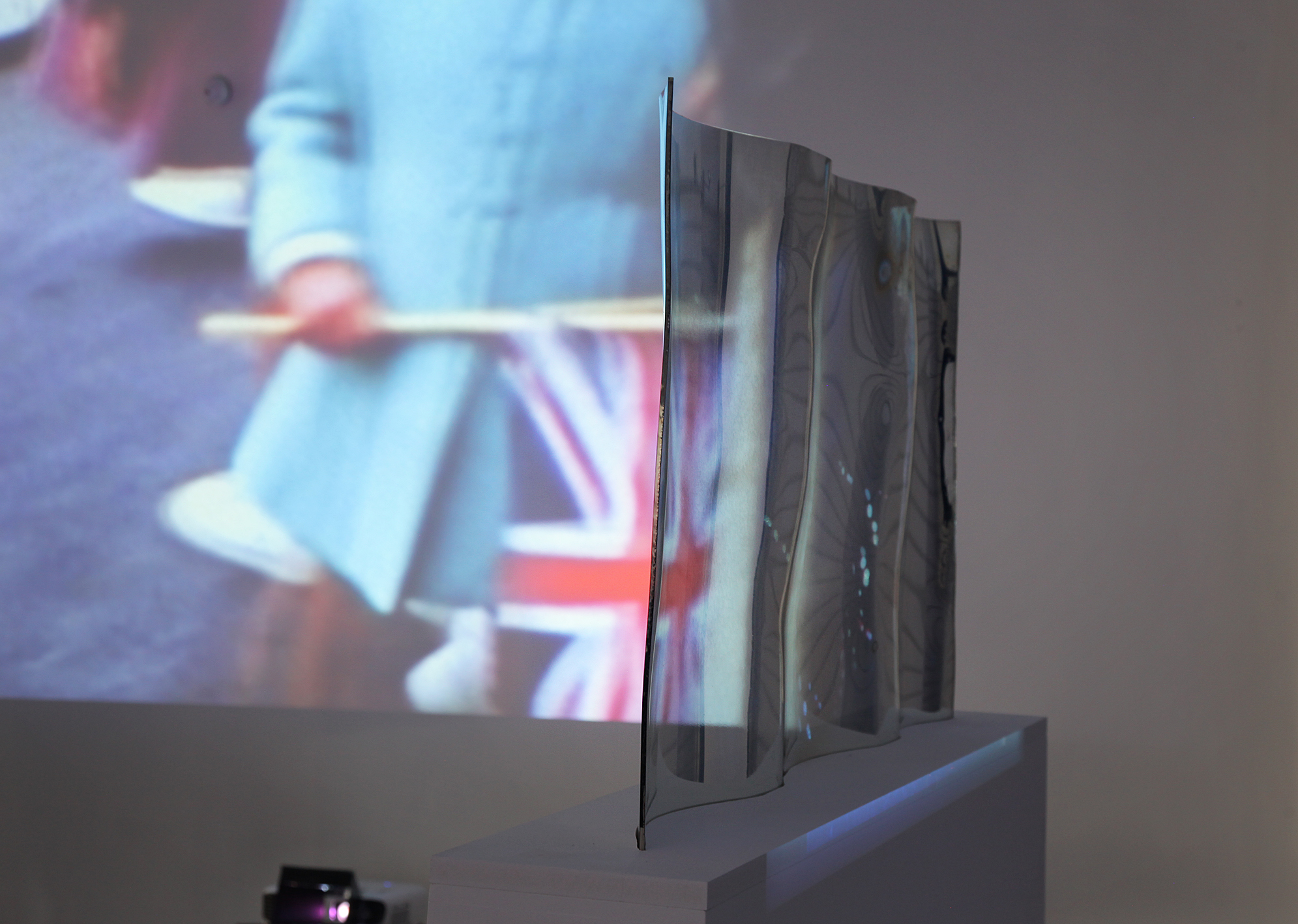Project 23 - 1954
1954
David Green
An Urban Dream Brokerage Project
7-17th December 2017
165 George Street
Property Partner: NKI Trust
Working with fragments of historic film documenting the visit to Dunedin of a fresh-faced 25-year-old Queen Elizabeth the Second, David Green’s installation 1954 interrogates historicity, shared social memory, and the roots of culture. The installation is held in the historic vacant shop space that was, at the time of the Queen’s visit, the Dreaver’s family milliners, who were in business in George Street between the 1870s and 1950s.
Since 2015 Green has been using digital video to explore the cinematic nature of how we understand and construct meaning in the world. One part of his experimentation has involved fracturing films and then redistributing their fragments in space, which he does here in a vacant commercial space that in its own history speaks to the events the film fragments depict.
Six months after her coronation (which followed Edmund Hillary’s conquest of Everest by one week) Queen Elizabeth spent three days in and around Dunedin. The numerous fragments distributed throughout the 1954 installation at 165 George Street are from the documentation by members of the Dunedin Cine Club between 25 and 28 January 1954. While the shop still stands, for most of us Green says it will be hard to recognise the day to day interactions of a Dunedin that was nearly 64 years ago.
“Urban dwellers are like successions of hermit crabs who readily take up empty shells provided by makers now long gone. These shells retain the traces of lives and worldviews quite different from ours today.
Green conducts what he calls an experiment in disarticulated cinema: “More often than not,” he writes, “traditional cinema assembles loose evidence into a very particular story. Any collection of images can be made into any number of stories but once presented with a particular story construction it becomes difficult to change the way we think about it.
“But what happens when those fragments of evidence are encountered in a distributed manner that is similar to the way we experience the world? Perhaps then the viewer can connect events in a way more personally meaningful by using them as building blocks while calling upon their own experience, imagination, and memory.”
Images: Justin Spiers

